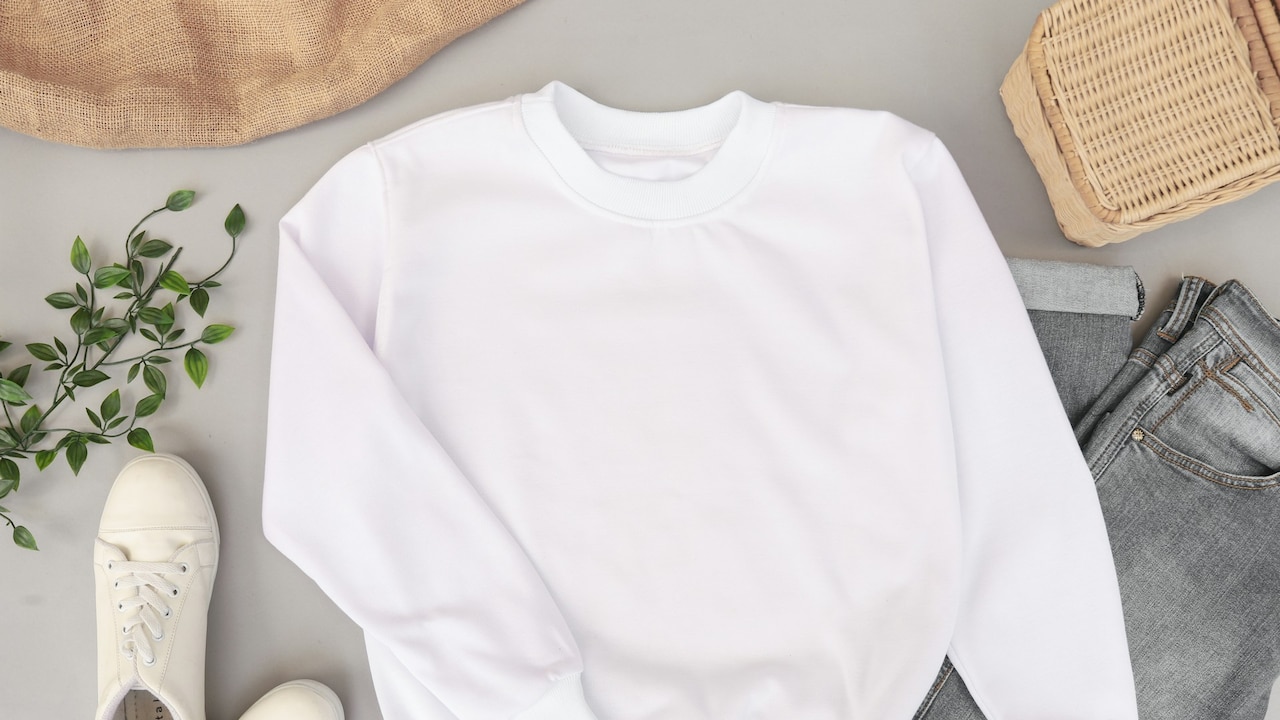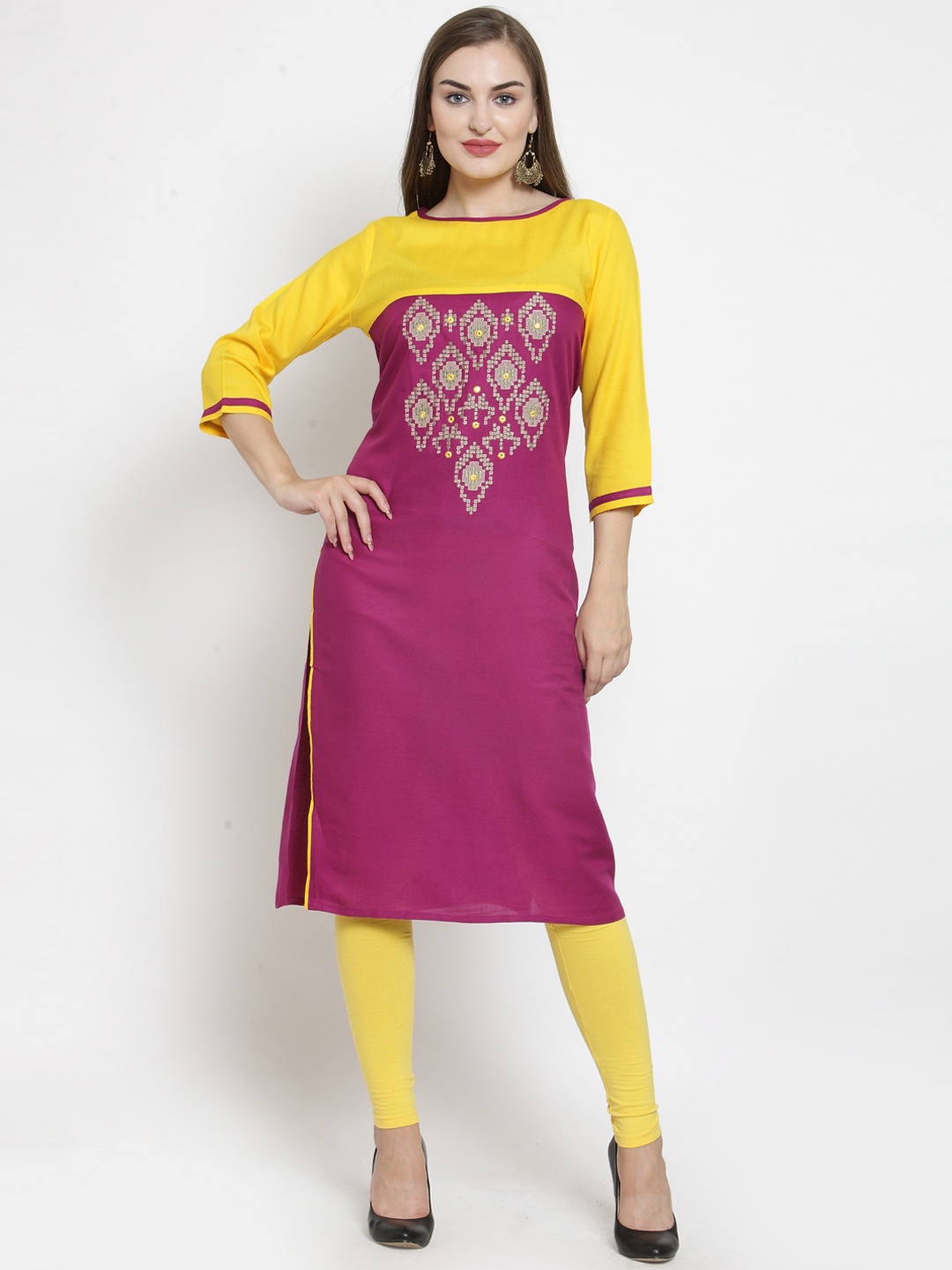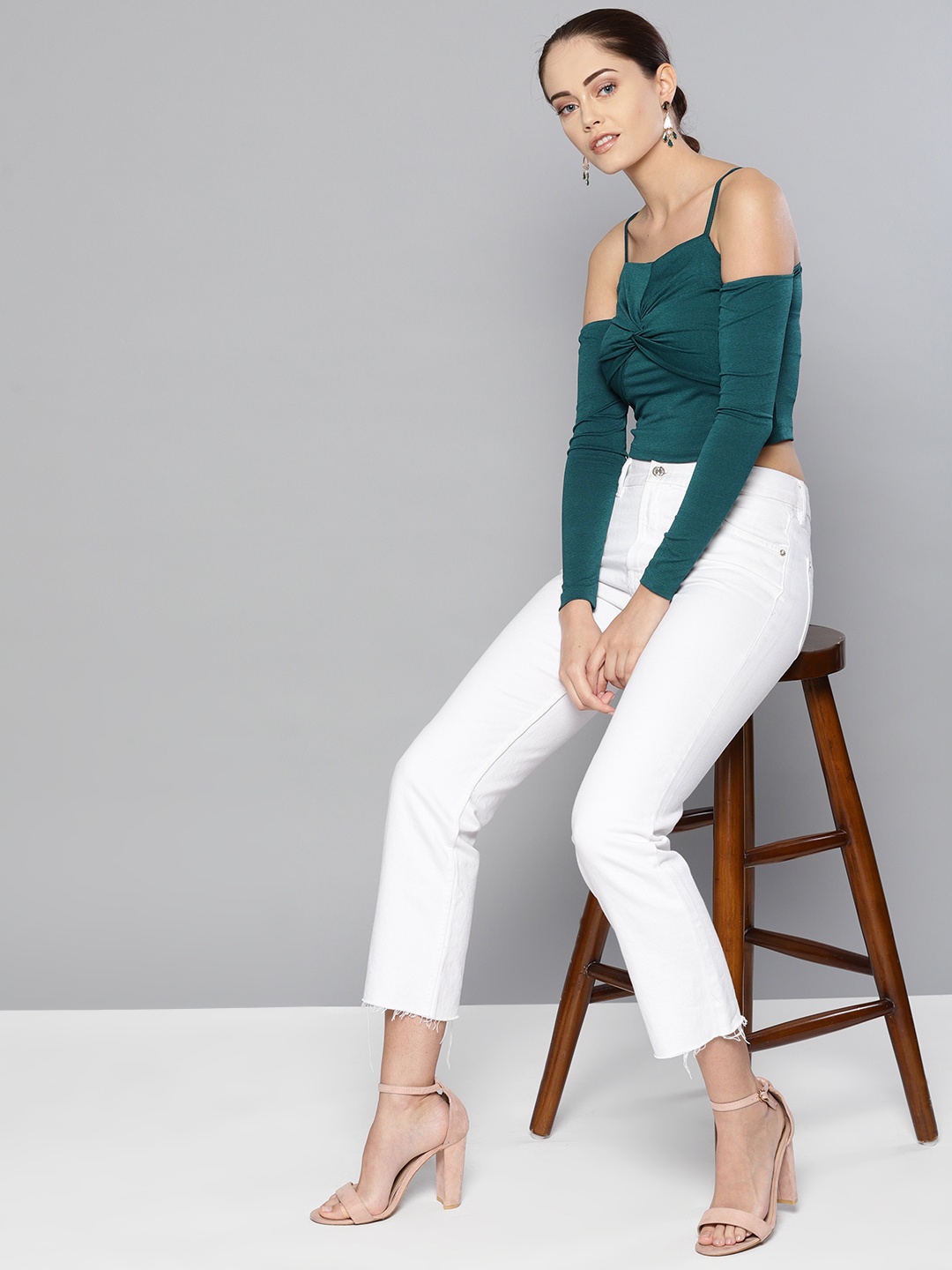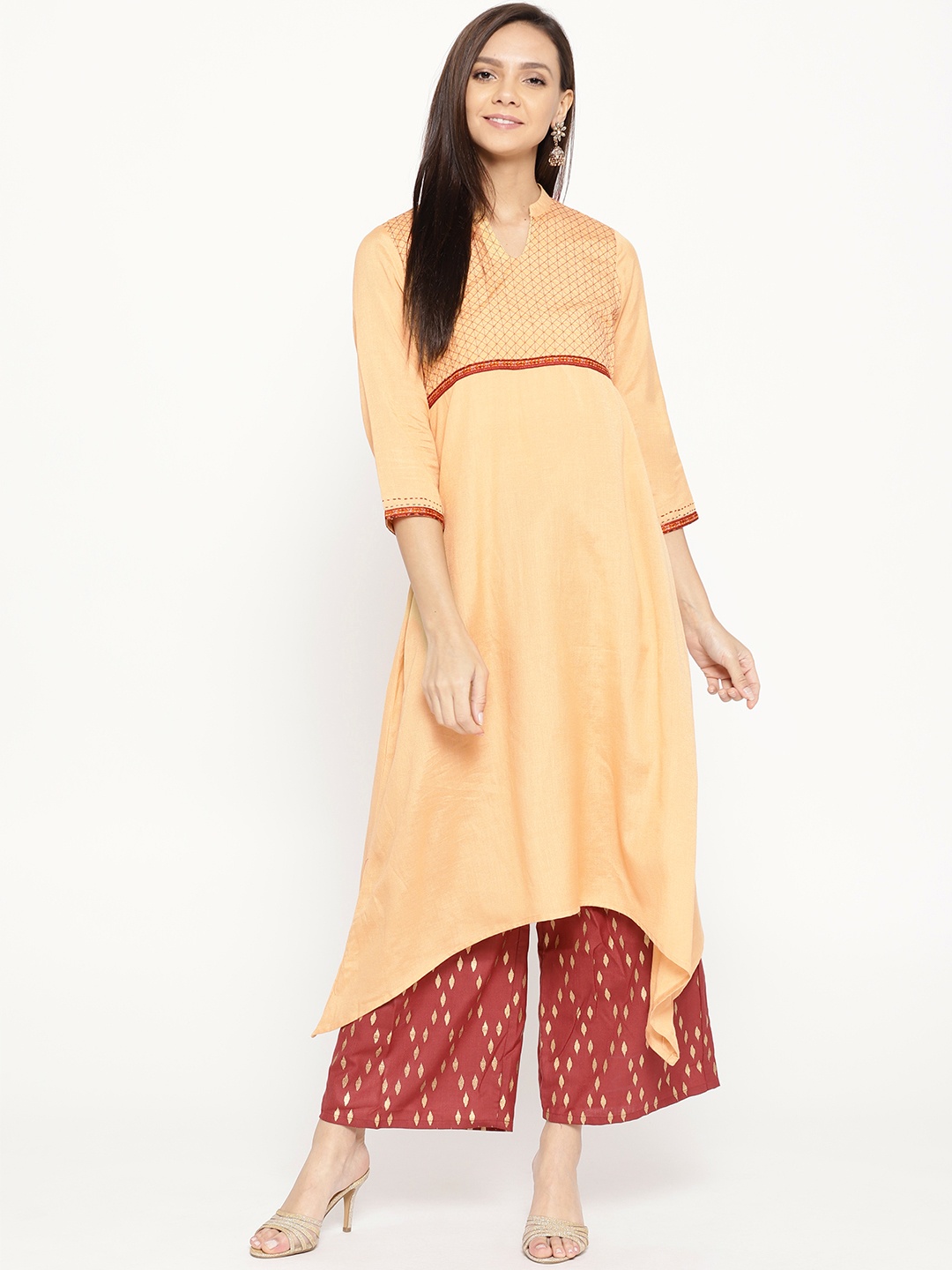How To Choose The Best Sweaters For Sensitive Skin And Know Why Some Itch And Others Do Not
This guide explores practical ways to choose sweaters that suit delicate skin, along with the reasons a few sweaters itch more than others.

Best Sweaters For Sensitive Skin: How To Choose Soft, Non-Itchy Winter Wear.
Winter mornings in many parts of the country bring a familiar scene, steam rising from cups of hot chai, layered clothing fresh from cupboards, and the slight panic that follows when a favourite sweater suddenly feels prickly. Sensitive skin reacts quickly, and a scratchy sweater can ruin an entire day, leaving red patches and endless discomfort.

Explore easy tips to choose sweaters for sensitive skin; Photo Credit: Unsplash
The good news is that sweaters don't have to itch. With the right materials, construction, blends and finishing techniques, a soft and soothing experience becomes easy to achieve. Understanding what makes fibres behave well, or terribly, can help build a wardrobe that stays gentle, stylish and warm. Check out how to choose the best sweaters for sensitive skin and, at the same time, find out why some itch while others don't.
Also Read: Top 5 Cable Knit Sweater Vests To Style This Winter
Why Some Sweaters Soothe the Skin While Others Annoy It
1. Fibre Matters: Know What Touches the Skin
The fibre sits at the heart of every sweater. Some fibres feel naturally smooth, while others come with microscopic scales that irritate the skin. Wool stands as the most common example. Traditional wool has thicker fibres with scales that rub against the skin, causing that familiar prickly sensation. Meanwhile, finer versions like merino wool contain slender strands that glide against the skin without irritation.
Cotton, bamboo and modal sweaters offer breathable comfort. Their fibres lie flat and feel soft even on sensitive skin, making them dependable everyday choices. Cashmere, though considered a luxury, also works well due to its fine fibre diameter. A pure cashmere sweater may feel expensive at ₹10,000 or more, yet the comfort often justifies the price for those with sensitive skin.
When browsing shelves in winter markets or malls, touching fabrics before buying helps. Smooth fibres signal comfort, while coarse ones hint at trouble. Remember: the fibre sets the tone for the sweater's entire personality, so choosing mindfully keeps skin happy.
2. Micron Count: The Science Behind Comfort or Itch
Every wool fibre has a micron count, which measures its thickness. Lower microns equal softer fibres. Traditional sheep wool often ranges between 30 and 40 microns and tends to feel scratchy. Merino wool stays between 15 and 24 microns, creating a noticeably smoother feel. Cashmere sits even lower, usually between 13 and 16 microns, which explains its buttery softness.
Micron count turns into a secret code that shoppers often overlook. A lower number doesn't just mean luxury; it means comfort for skin that reacts easily. Unfortunately, many sweaters in budget markets don't mention micron counts, leaving the shopper to rely on touch and feel.
Running fingers lightly across fabric helps identify coarseness. A rough or stiff sensation often indicates a higher micron count. Softer, almost silky textures suggest a finer fibre. For sensitive skin, staying within 15 to 22 microns ensures comfort without breaking the bank.
Understanding microns helps explain why one woollen sweater feels perfectly soft while another triggers irritation. It's not luck. It's fibre science at work, and knowing this empowers better choices.
3. Blends That Help: Mixing Fibres for Better Comfort
Many sweaters come in blends, and these combinations can make a huge difference. Wool blended with acrylic often feels softer and more flexible than pure wool. Acrylic lightens the structure, making the garment less prickly and more durable. A blend such as 70% merino wool and 30% acrylic can offer warmth without irritation.
Cotton-synthetic blends offer stretch, structure and comfort on busy days. Bamboo-cotton blends bring breathability and a natural cooling effect, ideal for skin that warms quickly and sweats under heavy wool.
Budget-friendly blends simplify choices as well. A ₹1,500 sweater made with 40% wool and 60% acrylic often feels gentler than a cheaper pure wool option. However, ensuring that the dominant fibre suits sensitive skin remains essential.
Blended sweaters provide variety, affordability and improved comfort, but quality matters. A poor blend can trap heat and feel rough. A well-designed one enhances softness, improves fit and keeps the skin at peace all winter.

Go for comfortable fabric blends meant for sensitive skin; Photo Credit: Pexels
4. Knit Style: How Weave and Density Influence Comfort
The way a sweater is knitted affects how it feels. Loose weaves allow better airflow and reduce friction against the skin. Chunky knits often rely on softer fibres and leave space for the skin to breathe. These sweaters feel cosy without being suffocating.
Tight weaves create structure and warmth, but they may trap heat and feel irritating if created from coarse fibres. Ribbed knits stretch well but may grip too firmly on sensitive areas like the neck or wrists if the fabric feels rough.
Fine-gauge sweaters offer sleekness and elegance. They pair well with formal outfits but demand careful fibre choices. A fine merino or cotton knit feels smooth and ideal for workdays.
Exploring different knits reveals how construction changes comfort. Two sweaters may use identical fibres yet feel completely different because of the weave. Softer knit patterns create a gentle, cloud-like touch. Denser ones require premium fibres to avoid irritation. Understanding knit styles helps choose sweaters that balance warmth, softness and appearance.
5. Finishing Treatments: Why Some Sweaters Feel Softer
After knitting, sweaters undergo finishing treatments. Many brands use enzyme washes, softeners or steam processes to improve the fabric's texture. These treatments smooth fibres, reduce loose ends and create a comfortable surface.
Some sweaters lack proper finishing, which leaves fibres stiff and poking out. This often happens in mass-produced, low-cost items. A poorly finished sweater may look pretty but feel rough on contact.
Premium brands invest in better finishing, and that reflects in the feel. Even synthetic blends can become cloud-soft through good finishing techniques. Cashmere often undergoes gentle brushing that enhances the velvety effect.
However, finishing also affects durability. Over-softened sweaters may pill easily. Choosing well-finished sweaters with balanced softness ensures long-term comfort. Touching the inside of the sweater helps gauge finishing quality. A smooth inner surface suggests a thoughtful manufacturing process, which means less friction and less chance of irritation.
6. Labels and Necklines: Small Details with Big Impact
Small details often decide whether a sweater feels comfortable or irritating. A hard label stitched at the back can scratch the neck throughout the day. Many people end up using scissors to remove labels, only to risk cutting fabric threads. Choosing tagless sweaters or those with printed labels solves this problem.
Necklines matter too. Turtle necks and high collars offer warmth but may feel uncomfortable for skin that reacts easily. Crew necks balance comfort and coverage, while V-necks reduce contact around the neck altogether.
Cuffs and hems also influence comfort. A tight wristband made from stiff wool can cause redness and marks. Soft ribbing or cotton-lined cuffs feel better and reduce irritation.
Paying attention to these small design elements turns sweater shopping into a thoughtful exercise. Labels, seams and necklines may seem minor, yet they often determine whether a sweater becomes a reliable winter favourite or a regretful purchase.

Always go for a comfortable neck style and pay attention to tag placements; Photo Credit: Unsplash
7. Climate and Activity: Matching Sweater Choice with Real-Life Use
Comfort depends on context. A heavy woollen sweater may feel perfect during a trip to Shimla, but uncomfortable during a regular working day in a milder city. Sensitive skin reacts strongly to trapped heat and sweat, so matching sweater weight with climate becomes essential.
For dry and cold regions, merino wool offers warmth without making the skin itch. For mildly chilly cities, cotton-acrylic blends work well because they stay breathable and flexible. During high-movement activities, like commuting, walking or shopping, lightweight layers feel safer than thick single pieces.
Office environments often run warmer due to heaters or closed spaces. Fine-gauge cotton or blends suit these conditions better. Outdoor gatherings, evening outings and long drives call for warmer options.
Thinking about where the sweater will be worn helps avoid discomfort. Choosing based on real-life scenarios, rather than just style or trend, keeps sensitive skin calm and protected.
8. Allergy Considerations: When Skin Reacts to More Than Texture
Sometimes irritation comes not from coarseness but from allergies. Lanolin, a natural oil found in wool, causes reactions in some people. Even the softest merino sweater may trigger redness if lanolin sensitivity exists. In such cases, cotton, bamboo, tencel and cashmere become safer alternatives.
Dyes and chemical treatments can also irritate skin. Vibrant colours sometimes rely on stronger dyes, which may cause reactions. Looking for sweaters labelled as hypoallergenic or made with gentle dyes helps.
Detergents also play a role. Washing sweaters with harsh chemicals leaves residue that annoys sensitive skin. Switching to mild detergents reduces the risk significantly.
Understanding these factors helps identify whether discomfort stems from texture or allergic response. Choosing natural fibres, gentle dyes, and skin-friendly washing methods ensures sweaters remain comfortable and safe.
9. Budget-Friendly Choices: Soft Sweaters Without Overspending
Comfort doesn't always require luxury spending. Affordable sweaters in local markets, brand outlets or online platforms often come in cotton-acrylic blends that feel gentle and cost between ₹600 and ₹1,500. These blends work well for everyday use and suit sensitive skin when chosen carefully.
Merino wool options occasionally appear during seasonal sales at ₹2,000–₹3,000, offering great value for the softness they provide. Cashmere remains pricey, usually above ₹10,000, but there are cashmere blends that deliver comfort without overwhelming costs.
Inspecting textures before buying and checking inner linings helps. Some budget sweaters include a soft inner layer, making them kind to the skin even if the outer material feels rougher.
Building a wardrobe that suits sensitive skin doesn't demand huge spending. A mix of affordable blends, sale-season merino picks and one or two high-quality pieces creates variety and comfort without straining the wallet.

Choose sweaters that feel soft against the skin; Photo Credit: Pexels
10. Care and Maintenance: Keeping Sweaters Soft for Years
Even the softest sweater can turn rough if not cared for properly. Washing with hot water, using harsh detergents or drying in direct sunlight damages fibres. Gentle hand washing with mild detergent keeps sweaters soft and long-lasting. For wool, cold water works best.
Air drying sweaters flat prevents stretching and protects the knit. Using fabric conditioners sparingly helps maintain softness, though excessive use may lead to pilling. Storing sweaters with cedar blocks or naphthalene balls keeps insects away without leaving harsh scents.
Regular de-pilling using a fabric shaver maintains smoothness and prevents rough patches. Proper care ensures that sweaters stay as cosy and gentle as the day they were bought.
Good maintenance extends the life of the sweater and saves money. With simple habits, a favourite soft sweater can stay reliable winter after winter.
Products Related To This Article
1. DressBerry Women Blue Ribbed Pullover
2. Mast & Harbour Men Fair Isle Acrylic Pullover
3. Roadster The Life Co. Striped Acrylic Pullover
4. all about you Women Brown & White Fair Isle Pullover
5. WROGN Men Black Slim Fit Turtle Neck Pullover
6. Dennis Lingo Colourblocked Turtle Neck Slim Fit Pure Acrylic Pullover Sweater
7. Mast & Harbour Women Blue & White Floral Printed Cardigan with Cami Crop Winter Top
Sweaters hold a special place in the winter wardrobe, offering warmth and comfort through chilly days. Choosing the right one becomes essential when sensitive skin reacts quickly to textures and materials. Understanding fibres, micron counts, blends, knits and finishing techniques helps identify sweaters that feel soft, breathable and irritation-free.
Small details like labels, necklines and washing habits also influence how a sweater behaves over time. With thoughtful choices, a wardrobe filled with gentle, cosy and stylish sweaters becomes easy to create. This winter, comfort doesn't have to be sacrificed. The perfect soft sweater is out there, ready to make every cold morning feel warm and welcoming.
(Disclaimer: This article may include references to or features of products and services made available through affiliate marketing campaigns. NDTV Convergence Limited (“NDTV”) strives to maintain editorial independence while participating in such campaigns. NDTV does not assume responsibility for the performance or claims of any featured products or services.)
























